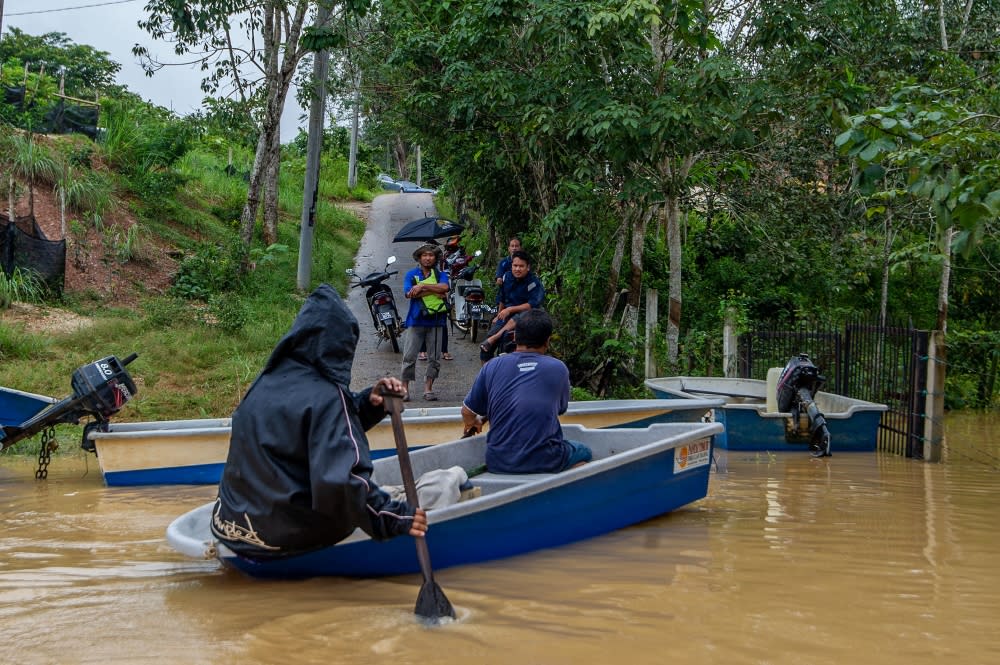 Malay Mail
Malay MailReport: Parts of Malaysia at risk of disappearing due to global warming-induced sea level rise

KUALA LUMPUR, May 18 — As soaring temperatures cause sea levels to rise at a rapid rate, the country is at risk of losing about 1,350km of coastline from severe erosion due to global warming in the next few years if no immediate measures are taken, according to environmental data and experts.
Based on data from the National Coastal Erosion Study 2015, Utusan Malaysia’s special report said that the affected areas facing critical coastal erosion are mainly in Sarawak, Sabah, Johor, Perak and Terengganu.
It said that several areas across Malaysia were at risk of disappearing entirely before the projected date of 2050 due to rising sea levels.
The report cited the coastal areas of Pantai Ban Pecah in Perak that were once paddy fields before being flooded by seawater in the 1960s, believed to be from global warming and extreme weather.
Another example was Pekan in Pahang where the homes of Kampung Tanjung Batu and Nenasi villagers are under threat as they are located only 20 to 40 metres from the beach due to sea erosion over the past few years.
The report said the figures from the examples will most likely increase due to the current global warming trend and extreme weather, where the sea level will rise in stages.
“Data by the National Hydraulic Research Institute of Malaysia (NAHRIM) and the Commonwealth Scientific and Industrial Research Organisation in 2017 revealed the risk of erosion due to rising sea levels.
“In the peninsula, the level was recorded at 0.67 to 0.71 metres and in Sabah and Sarawak it was at 0.71 to 0.74 metres,” said the Utusan Malaysia report that was published today.
Universiti Putra Malaysia’s (UPM) Faculty of Medicine and Health Sciences (Environmental and Occupational Health Department) environmental health specialist Prof Juliana Jalaludin the critical areas at risk of erosion with an aggregate length of 55.4km are receding rapidly at a rate of more than four metres per year.
“In Malaysia, the number of mangrove forests will disappear due to an increase of 90cm in sea level. With the destruction of coastal areas, about 1,000 sq km of agricultural land are at risk of being submerged.
“Malaysia will need about US$5,750 million (RM26,028 million) in additional economic assistance due to the rising sea level by 2030.
“Additionally, the country will also lose 7,000 sq km of land area and more than 0.05 million people will be displaced due to rising sea levels if it reaches one metre at 2100,” said Juliana to Utusan Malaysia.
The Malay daily also cited the latest study by Nature Communications, namely its Elevation Data Triple Estimation to Sea–Level Rise and Coastal Flooding, that named the affected states as Perlis, Kedah, Penang, Perak, Negeri Sembilan, Pahang, Kelantan and Sarawak.
From the same study, it was revealed that the Asian population is the most vulnerable to rising sea levels, which is at 70 per cent on the global scale.
Meanwhile, UPM’s Faculty of Forestry and Environment’s Department of Environment senior lecturer Abd Muhaimin Amiruddin said that the forecast is a moderate expectation if the government and the public play their respective roles.
He said the sea levels will continue to rise and through intervention measures it is necessary to constantly monitor by making adjustments according to the current situation.
“We cannot just depend on one initiative because the sea levels are always rising from time to time.
“The prediction in increase is only an average. We must remember that there are other factors that cause a significant increase in sea water levels such as high tides, heavy rains and monsoon rains.
“Like in Sandakan in Sabah late last year. More than 100 village homes on the water were destroyed due to high tides. The reason was when the houses were built, they did not take into account on the possible maximum sea levels,” he said.
Abd Muhaimin said Malaysia can follow the flood management model by the Netherlands to ensure that the effects of rising sea levels can be minimised as much as possible.
He was referring to the Netherlands where in the past decade, the country has been working to enact plans for flood safety based on a 2014 assessment that anticipated a sea level rise of up to about one metre by 2100.


